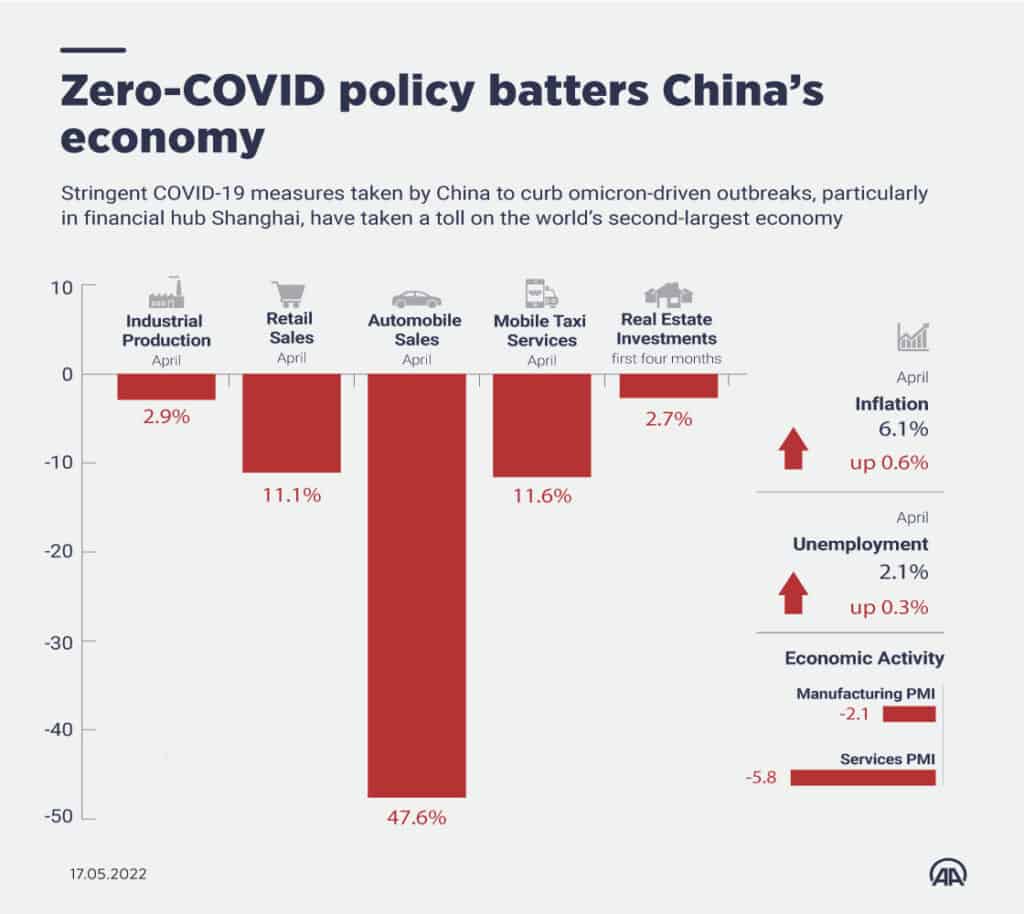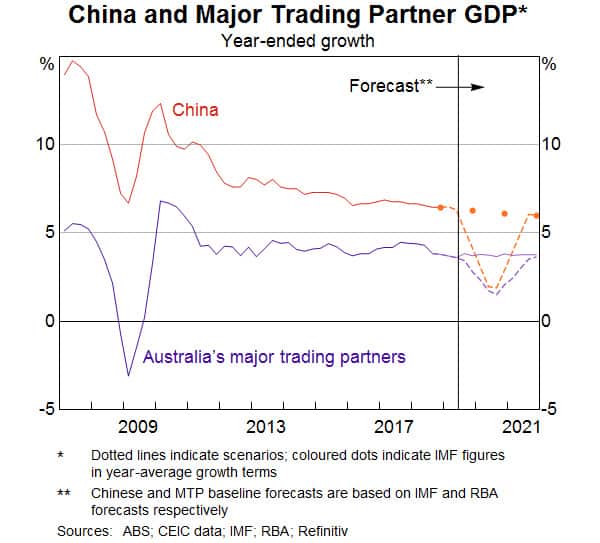
Asia has a significant impact both internationally and in Australia. Two-thirds of the world’s population resides in Asia, making it the most populous continent. Asia is home to some of the most dynamic, diverse, and complicated societies on earth. It will soon be the world’s largest consumer and producer of products and services.
In 2014, Asia accounted for 11 of Australia’s top 15 export markets (for both commodities and services), or approximately 71% of all exports. Approximately 58% of Australia’s two-way trade was with nations in the Asia-Pacific region. There is no denying the economic significance of Australia’s effective engagement with Asia.
Besides from being the most populous nation, China is the major economic centre of Asia. It is also known as the “Factory of the World,” where the majority of goods are produced. Businesses in Australia rely on China since it enables these companies to create their products at competitive prices.
The IMF reports that China’s economy has slowed since the pandemic, going from a record growth of 10% per year for three decades to approximately 7%, with an estimate of 6.3% for 2016. Even if this is affecting commodity prices, it might be advantageous for many Australian companies that export to China.
Today, we’ll look at the economic relations between Australia and China, how Australian businesses may endure the current downturn, and what options are available for producing goods at competitive rates.
Why is it so difficult for China’s economy to recover from the pandemic?

China’s economy has slowed down on purpose, primarily as a result of the country’s realisation that strong growth cannot last forever without bringing about a devastating crisis at some point. According to the BBC, the Chinese government decided against such a fall and instead aimed for a more moderate and sustained growth level of close to 7%.
At 48% of GDP, investment in China is thought to be far too high, which might spell disaster in the case of a meltdown in the real estate industry.
As a result, China has started to rebalance its economy so that household consumption of goods and services will now account for a larger portion of its growth than industry and investment.
According to a recent report by the International Monetary Fund, China’s “Zero covid policy”,” evergrande real estate crisis“, and the crackdown on cheap credit are all expected to contribute to lowering China’s real GDP growth rate from 7.4% last year to 6.8% this year and further weakening demand for Australian commodities.
China is experiencing setbacks on the political fronts as well, which has changed its objectives. It appears like China is focusing more on political matters than on economic recovery, which is bad for everyone around the globe, not just Australia.
What effect does this have on Australia?

The biggest effect on Australia is the drop in commodity prices, which have declined by 8.5% over the past year, as most of Australia’s exports to China are in the commodities sector.
However, there may be upsides in other areas, so the news is not necessarily all bad. Although it’s impossible to accurately anticipate the future, some of the more promising developments for Australian exports could include:
- The greater long-term durability of China’s economy compared to the potential for a significant crash and burn!
- Consumer products and service exporters may have more scope and opportunities if China places more emphasis on consumption as the engine of its economy. Some economic experts believe that the increased emphasis on consumption in China will be beneficial for the exports of education and tourism. Consumer goods including clothing and personal care items, food and drinks like Australian wine, healthcare services, financial services, biotechnology, and environmental technologies may all present prospects.
- Domestically, it might inspire Australia to plan ahead and step up efforts to support innovation and entrepreneurship rather than relying so largely on commodities for economic growth.
Despite short-term effects like volatility in commodity prices, the government of China’s actions to prevent a crash are not anticipated to have much of an influence on long-term global commerce.
How Australian businesses may endure the current downturn?
The more robust your company is, the less likely it is to be impacted by risks or unforeseen events, assuming they do occur. Financial management is only one aspect of strengthening your company. Additionally, it offers techniques for growing and retaining your clientele, marketing your company on a budget, boosting employee morale, and enhancing corporate procedures. Additionally, you want to look for chances to collaborate and build partnerships because doing so will lessen the hazards to which you are exposed.
But first, let’s see the government’s strategy for continuing to promote small businesses. Instead of offering direct financial help, the majority of these projects concentrate on enhancing the working environment for small businesses in Australia.
Permanent reforms to insolvency laws for small businesses
More small businesses should be able to withstand bankruptcy procedures with the support of long-lasting changes to the insolvency regulations for small businesses. The changes make it simpler for enterprises with total debts of less than $1 million to restructure their obligations and carry on with business as usual as opposed to winding up. Following the expiration of the interim insolvency relief that was implemented in response to the pandemic, the new framework went into effect in January 2021.
The compulsory Payment Times Reporting Scheme
It forces larger organisations to publicly record how soon they pay bills issued by small businesses. It has been in place since January 2021. Large enterprises should be able to make payments more quickly as a result of the enhanced transparency and potential for higher monitoring. Small firms have repeatedly complained that certain major companies force them to accept protracted payment terms, which negatively affects their cash flow.
The Australian Prudential Regulatory Authority recently announced new capital rules
Although not a move specifically aimed at SME access to financing, it will, in part, reduce the amount of capital banks must maintain against unsecured SME loans for select institutions. As a result, banks will pay less to fund SME loans, which should increase the marginal appeal of small company financing. Currently, early 2023 is the anticipated date for the new regulations to go into effect.
Apart from that, the following tactics should be taken into account if you want to strengthen your business during a recession.
Marketing strategies
Reviewing your marketing strategies will assist you in developing fresh suggestions for boosting sales and finding more efficient ways to spend your marketing budget. Communicating your competitive advantage should be your main priority.
Additionally, your USP should help you stand out from the competition. Additionally, it’s critical to have plans for evaluating the success of your marketing.
It can be expensive to market your company, so it’s crucial to look into whatever free marketing resources you may have, such as social media and word-of-mouth promotion, while the economy is struggling.
Managing and upskilling your workforce
Make sure your human resources (HR) plan is current. You should include workforce costs in your plan so that you can estimate the cost of your goods and services.
By properly explaining to your team what is happening within the company, you may increase morale and motivation. Make an effort to involve them in decision-making and solution-finding.
You might need to adjust your staffing plans during a recession. If hours must be cut, look for adaptable solutions (e.g. you could ask some of your full-time staff to work a 4-day week, or use job-sharing arrangements). Make sure you are aware of your obligations for terminating employment if you do need to let some employees go in order to save money.
Creating innovative techniques
Creating new processes can help you remain competitive and adapt to shifting market conditions. You should evaluate as part of this process whether utilising technology would boost productivity, cut expenses, and raise your company’s competitiveness, such as by setting up a customer management system or conducting business online.
Networking
During a recession, networking can be helpful to see how other companies are faring. Additionally, you might at very little cost to your organisation find new prospects, clients, employees, suppliers, and business partners.
Think about partnering with other companies, perhaps by providing discounts and similar services.
Bottomline
Over the last few decades, the Chinese economy has grown quickly, and cross-border ties with Australia have also grown. However, Chinese growth has slowed down since the start of the decade. This slowdown has been planned and is intended to shift the economic trajectory to one that is more sustainable. Risks, however, continue to be high, particularly in light of rising debt. A major downturn in the Chinese economy could be brought on by a wide range of factors, such as a slowdown in the housing market, a shock to external demand, or a shock to the financial system. Due to Australia’s connections to China, the domestic economy may be significantly impacted.
However, a depreciation in the exchange rate and supportive monetary policy might somewhat counteract these adverse consequences. The effects on the Australian economy will ultimately depend on whether policy can react in a timely manner and proportionately to the magnitude of the shock, even though larger effects are possible, especially if the global and financial spillovers from a China-specific shock are greater than what is taken into account in our scenarios.
